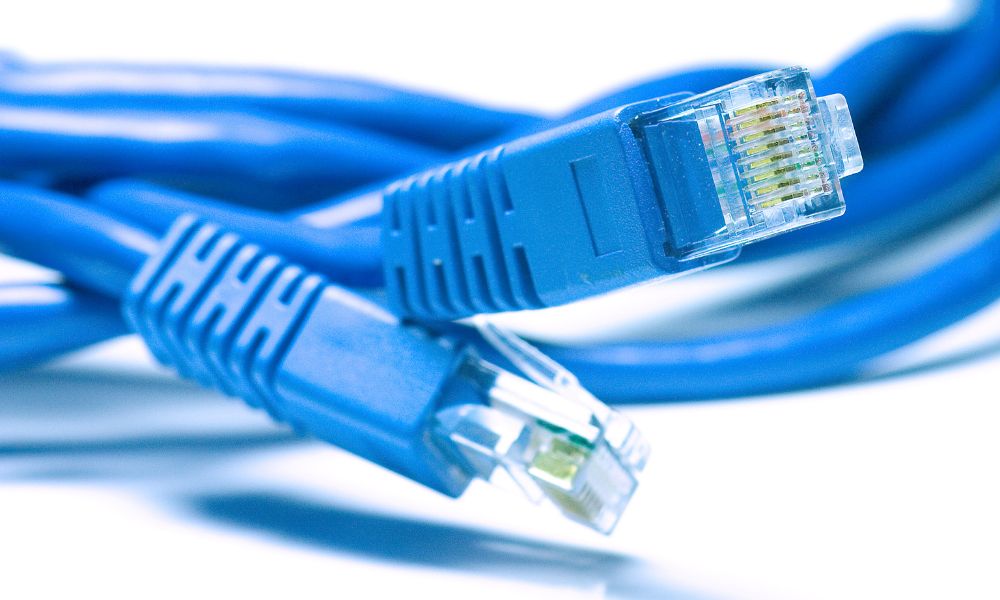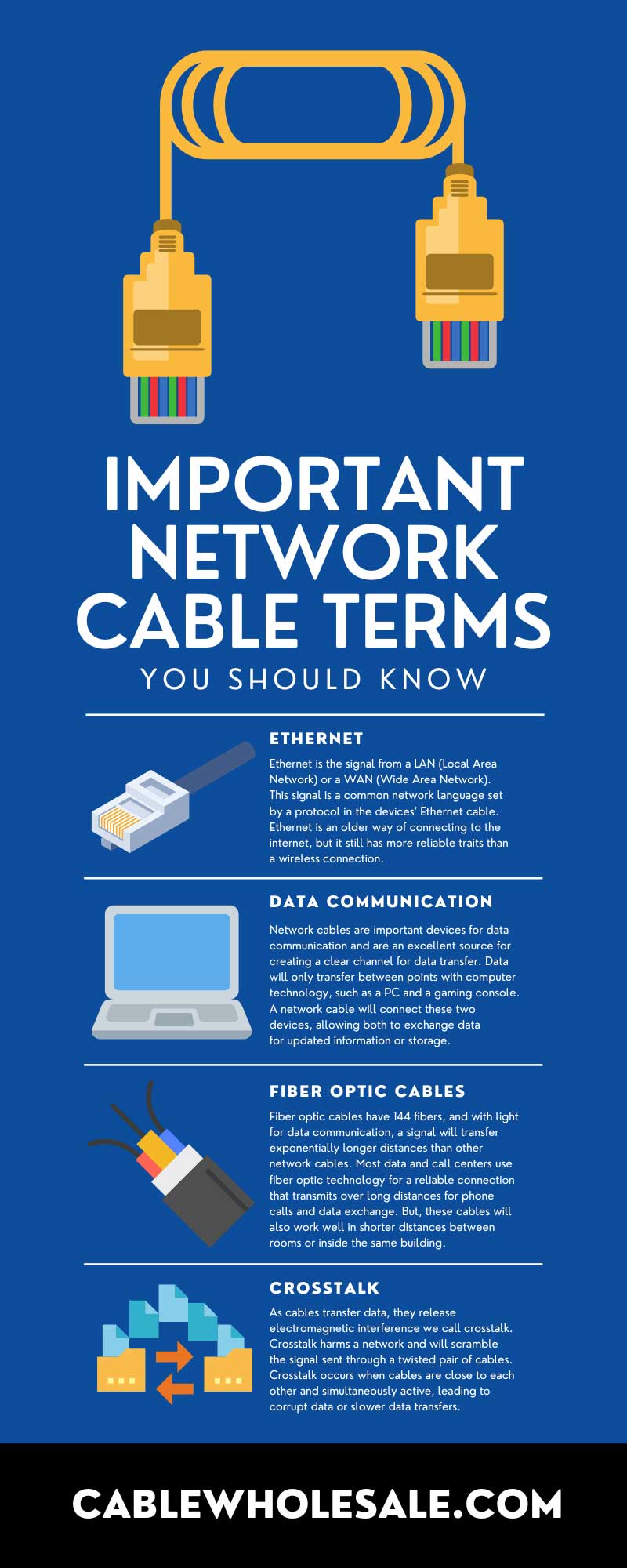
Many networks use cable technology to form connections between devices and have numerous aspects and features that will facilitate functionality. Understanding the terms surrounding cable technology will help you learn more about network cables and how to improve your network. Keep reading for more information on important network cable terms.
Ethernet
As one of the most used network cables, Ethernet cables are a reliable form of cable communication that create faster connections. Ethernet is an essential term in cable technology to differentiate between a cabled network using Ethernet and a wireless network using Wi-Fi.
Ethernet is the signal from a LAN (Local Area Network) or a WAN (Wide Area Network). This signal is a common network language set by a protocol in the devices’ Ethernet cable. Ethernet is an older way of connecting to the internet, but it still has more reliable traits than a wireless connection.
Use the strength and reliability of Ethernet to connect devices and maintain a steady connection to the web. You’ll find Ethernet cables used in businesses and home offices for their great connection and fast transfer speeds that create a productive work environment.
Data Communication
One of the primary objectives of creating a network is to implement data communication between two or more devices. Data communication is transferring or receiving data from one point to another. The data received may include instructions, documents, files, or software.
Network cables are important devices for data communication and are an excellent source for creating a clear channel for data transfer. Data will only transfer between points with computer technology, such as a PC and a gaming console. A network cable will connect these two devices, allowing both to exchange data for updated information or storage.
Fiber Optic Cables
Technological advancements continue, and some of the most revolutionary devices use light as a source. Fiber optic cables are cable technology used in networks to transfer data via a beam of light that carries signals received as information. The “fibers” in a fiber optic cable are small glass tubes as wide in diameter as a human hair. The light beam bounces off the walls of the tube until it reaches the terminal point where the signal processes into information.
Fiber optic cables have 144 fibers, and with light for data communication, a signal will transfer exponentially longer distances than other network cables. Most data and call centers use fiber optic technology for a reliable connection that transmits over long distances for phone calls and data exchange. But, these cables will also work well in shorter distances between rooms or inside the same building.
Shielding
Network cables require protection from sources of interference, such as radio waves. Shielding is the best way to keep interfering waves out of a signal’s path as it makes its way through the cable’s conduits. Shielding comes in various types with different effects configurations that will provide better protection.
Shielding in a cable is a thin layer of metal that defends the data transferring against interfering waves. This layer will consist of copper, aluminum, or bronze foil or braid to ensure the electromagnetic signal inside the cable will flow well and receive little disruption.
Twisted Pair
Network cables, such as Ethernet, have wires that transfer data and twist in pairs to form a single circuit. The twisted pair will improve electromagnetic surges in the cable, which improve defenses against EM interference. Along with the shielding of a cable, there are different types of twisted pairs.
The variations will mainly include unshielded twisted pair (UTP) or shielded twisted pair (STP), with variations on whether shielding is a foil or a braid. A twisted pair is an important network cable term to know, and it will help you find the best network cables to help your network stay connected and protected.
Crosstalk
As cables transfer data, they release electromagnetic interference we call crosstalk. Crosstalk harms a network and will scramble the signal sent through a twisted pair of cables. Crosstalk occurs when cables are close to each other and simultaneously active, leading to corrupt data or slower data transfers.
Keep cables separate to avoid crosstalk and clear your data communication channels. Cable management is an essential element where ever you go, and it’s how a business that orders bulk cables keeps operations running and reduces the chances of disruption from crosstalk.
There are numerous terms to know regarding network cable technology. Use this guide as a lexicon to understand network cables and how they function in a network to bring more potential to your network and the way you transfer data.




